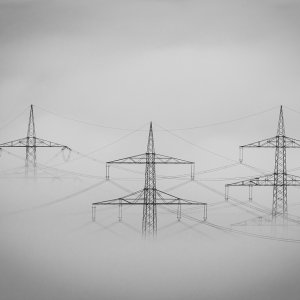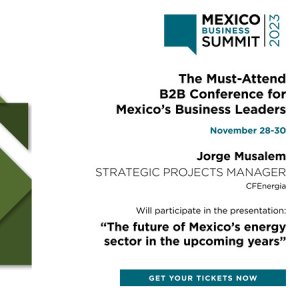Introducing More Liquidity to the Electricity Market

STORY INLINE POST
Q: What types of services does TradeOn offer its clients?
A: We are the only professional wholesale broker established in the Mexican energy sector. This means we are the only interdealer broker that intermediates between wholesale counterparties in the market, which we focus on completely. Our raison d'être is to be a window of liquidity in the Wholesale Electricity Market (WEM). TradeOn aims to add this liquidity through bilateral transactions of any hedging contracts, both physical products and financial. In Mexico, we focus mostly on physical products. We handle this either in a traditional manner, through voice broking, or through our digital platform where counterparties can display prices and interest, and place transactions directly with each other, making the operation more efficient. Our main goal is to get people to complete transactions and create liquidity. Another goal is to make the process simpler and more efficient through transaction and credit terms, contracts used and other factors. We not only showcase prices and get people to close the sale but also get them engaged in the negotiation process. This involves legal, credit, risk and other factors that are involved in every transaction until it closes.
Q: What are the characteristics of the company’s platform that help facilitate these transactions?
A: Our proprietary trading platform, to which many people have access, showcases the prices in the electricity market. You can see different instruments or products for different regions in Mexico, which are valid for different durations. This can range from a week up to years. The platform therefore offers full-scale granularity of durations for transactions, but our focus lies mostly in the short term: one month and up to three years being the most liquid tenor. This is why we make our transactions as efficient as possible. If you want to close a transaction for a year, you cannot spend two months closing the deal. Due to the relatively low maturity and level of liquidity in Mexico’s WEM, we tend to talk directly to the parties involved. The platform, however, is much more broadly available and shows users the wider scope of the market.
Q: What should be done in Mexico’s WEM to add more liquidity into the mix?
A: The main factor that needs improvement in the Mexican environment is risk management. The WEM is a complicated nodal market. When it was designed, it had many products and mechanisms to manage. Unfortunately, many of these mechanisms have not been implemented. Therefore, participants must look for alternative ways to manage risk. The main issue occurs with congestion or losses, leading to a difference in price of each node or region in the country. In other markets, average price swings are less than US$10, but in Mexico you can see them swing between US$100 and US$300 dollars from one hour to the next, within a single region. This factor, in conjunction with the ex-post resettlements characteristic of the Mexican spot market, makes everything more complicated. As a result, there is a special type of participant, called a marketer. They are considered pure traders who manage and then repackage products to sell them to qualified suppliers (QS) or other participants. Since last year, one can observe that more and more participants are starting to understand the risk, how to manage it and how not to tie themselves fully to a transaction. If a player signs a one-year transaction and it does not turn out as expected, for instance, they should be looking at how to turn this around, hedge it and cover the risk or resell it. This type of interaction between participants is starting to occur more frequently, especially since energy generators are not in as great a position as they were before due to lower spot energy prices. As this evolves, more liquidity will be added to the market.
Q: What are the biggest issues TradeOn’s clients are facing?
A: Other than concerns regarding price hedging, the pandemic and policy direction of the government have been the biggest topics of discussion. First of all, there is a decrease in demand. This affects the market: if people signed hedging contracts for multiple years to cover an industrial energy user and then prices drop and the user is not consuming as much as it did before, a problem arises. Normally, companies would pass the costs on to the user, who would of course not be happy to pay extra for something they are not using. This concern has pushed many QSs to look to alternatives in regard to selling energy, how to turn around transactions or how to sell excess energy that they contracted.
In terms of regulations, registering marketing participants was an issue even before the recent controversies. To register an end user and bring them online with a QS takes a long time: between six and 10 months. This has still not improved.
Q: How does the company assess the effects of recent policy changes?
A: There have been many changes proposed by the government. First, the interconnection of new renewable projects and second, the merit-based order of economic dispatch and clearing of units in the spot market every day. These measures have been stopped through legal procedures on the part of participants in the WEM. For these changes to really take place, the government would have to change the law overseeing the industry at the constitutional level. If that happens, concerns would be much greater because the whole sector would be reshaped. Nonetheless, even though they are concerned and take action where appropriate, our clients are continuing their operations as normal. That is the real question clients need to ask themselves: are they willing to remain here for the long term and thus manage the risks that occur or not? For some participants, the risk of a policy shift had not been considered or analyzed.
Q: How does TradeON asses the necessity of Clean Energy Certificates (CELs) in the current energy market?
A: I would split this issue in two. On the one side, there is CFE’s basic supplier arm, which generates the biggest demand for CELs and can legally only purchase them through the auctions. There exists a still-unused mechanism, wherein CENACE and CRE should help CFE to purchase the amount of CELs that CFE did not cover at long-term auctions. This area is quite opaque: whether CFE has enough CELs, what happens if this is not the case and how they would cover for it are unknown as of today.
On the other side of the coin, we have the private sector. Through our experience, we see that QSs on the demand side are still taking care to comply with annual requirements. We saw this particularly when the limit to comply approached last May. Prices of CELs went down after CFE tried to get CELs accredited from its old hydropower plants. Even though its prices have recovered since, they have not reached previous levels, which is also because renewable energy supply has increased significantly over the last year in comparison to the demand that needs to be covered by private sector that has been able to bring their loads online.
Q: What are TradeOn’s goals for the near term?
A: Our main objective is to continue to create liquidity. We will do this by adding more participants of any kind to the market. We want to help them understand how to hedge, transact bilaterally to cover their risk and how to capture the best prices, while adequately managing risks. This includes offtakers with a large energy need, who represent themselves on the market instead of moving through a QS. Many people agree, based on the general forecasts, that prices will remain low for at least a couple of years. The goal is to highlight to potential offtakers if an opportunity exists for them on the WEM, and how to implement this by themselves or through third parties that are already well established within the market.
Tradeon Energy is a key player in the Mexican Wholesale Electricity Market. Located in Mexico City, the company offers brokerage and consultancy services to every stakeholder along the value chain.








 By Cas Biekmann | Journalist and Industry Analyst -
Mon, 09/07/2020 - 10:56
By Cas Biekmann | Journalist and Industry Analyst -
Mon, 09/07/2020 - 10:56















